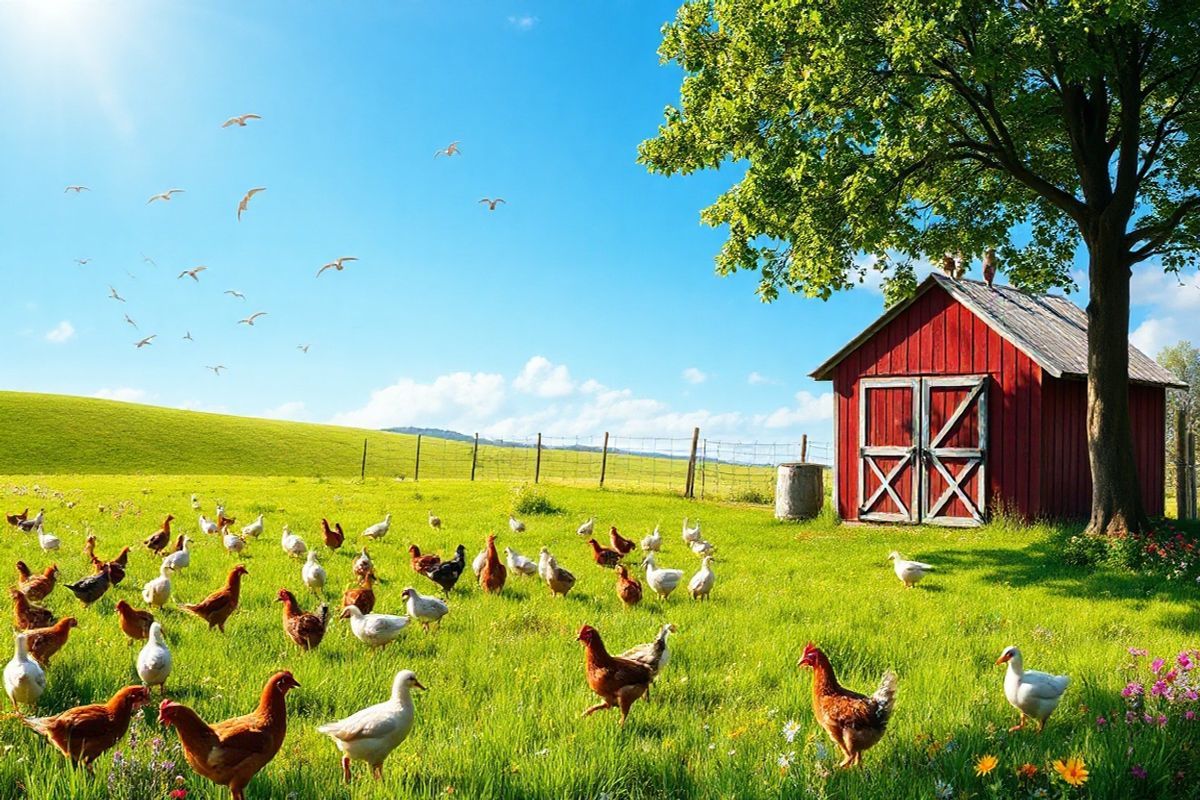Table of Contents
The Connection Between Avian Species and Tuberculosis

Avian tuberculosis, primarily caused by the bacterium Mycobacterium avium, poses a significant risk not only to birds but also to humans. This zoonotic disease often affects various avian species, particularly poultry and wild birds, which can act as reservoirs for the bacteria. Recent studies have highlighted the increasing incidence of avian tuberculosis in humans, particularly in individuals who have close contact with infected birds. The transmission to humans typically occurs through inhalation of aerosols or ingestion of contaminated food or water.
The bacterium Mycobacterium avium is closely related to Mycobacterium tuberculosis, the causative agent of human tuberculosis. Understanding the ecology and transmission dynamics of avian tuberculosis is essential for preventing outbreaks in humans, especially in communities with high exposure to birds. Effective surveillance and biosecurity measures are critical in both avian populations and human communities to mitigate the risk of zoonotic transmission.
Uncovering the Symptoms of Avian Tuberculosis

The symptoms of avian tuberculosis in humans can vary widely depending on the stage of the disease. Initial infections may be asymptomatic, with individuals not showing any clinical signs. However, as the disease progresses, more severe symptoms can emerge. Common symptoms include:
- Prolonged cough
- Chest pain
- Weakness or fatigue
- fever
- Night sweats
- Weight loss
- Loss of appetite
In advanced cases, the bacteria can spread beyond the lungs, leading to extrapulmonary tuberculosis, which may present additional symptoms based on the affected organs. For example, if the infection spreads to the kidneys, individuals may experience flank pain or hematuria. The chronic nature of the symptoms often leads to delays in diagnosis, complicating treatment efforts and increasing the risk of transmission to others.
Risk Factors That Increase Susceptibility to Avian Tuberculosis
Several factors can increase the risk of contracting avian tuberculosis. These include:
- Occupational Exposure: Individuals working in poultry farms, veterinary services, or wildlife rehabilitation are at heightened risk due to regular contact with infected birds.
- Immunocompromised States: People with weakened immune systems, such as those living with HIV/AIDS, diabetes, or undergoing immunosuppressive therapies, are more susceptible to infections.
- Close Proximity to Birds: Living in or visiting areas where birds congregate can increase exposure to the bacteria.
- Lack of Biosecurity Measures: Inadequate hygiene and biosecurity practices in poultry farms can facilitate the transmission of the disease to humans.
Preventing avian tuberculosis involves addressing these risk factors through education, vaccination of poultry, and improving biosecurity measures in agricultural practices.
Diagnosis and Testing for Avian Tuberculosis in Humans
Diagnosing avian tuberculosis in humans involves a combination of clinical evaluation and laboratory testing. The diagnostic process typically includes:
- Medical History and Physical Examination: Physicians assess symptoms and potential exposure to infected birds.
- Tuberculin Skin Test or Interferon Gamma Release Assays (IGRAs): These tests help identify latent tb infections.
- Sputum Culture: A critical component for confirming active disease; sputum samples are analyzed for the presence of Mycobacterium avium.
- Chest X-rays or CT Scans: Imaging studies help identify pulmonary involvement and assess the extent of the disease.
Early detection is paramount for effective treatment. Rapid molecular diagnostic tests, such as PCR, are increasingly being utilized to expedite the identification of the bacteria and ensure timely treatment initiation.
Effective Treatment and Management Strategies for Avian Tuberculosis
The treatment of avian tuberculosis in humans typically involves a multi-drug regimen similar to that used for pulmonary tuberculosis. The standard treatment protocol includes:
- First-line Antitubercular Drugs: A combination of isoniazid, rifampicin, pyrazinamide, and ethambutol is commonly used for an intensive phase lasting two months, followed by a continuation phase of four to six months.
- Directly Observed Therapy (DOT): This approach ensures adherence to the treatment regimen, which is crucial for preventing drug resistance.
In cases of drug-resistant Mycobacterium avium, longer and more complex treatment regimens may be necessary, involving second-line drugs and specialized care. Regular follow-up appointments are essential to monitor treatment response and manage any potential side effects.
Data Table: Treatment Regimen for Avian Tuberculosis
| Phase | Duration | Medications |
|---|---|---|
| Intensive Phase | 2 months | Isoniazid, Rifampicin, Pyrazinamide, Ethambutol |
| Continuation Phase | 4-6 months | Isoniazid, Rifampicin |
FAQs
Can avian tuberculosis be transmitted from birds to humans?
Yes, avian tuberculosis can be transmitted to humans, primarily through inhalation of aerosols or ingestion of contaminated food or water.
What are the common symptoms of avian tuberculosis in humans?
Symptoms may include prolonged cough, chest pain, weakness, fatigue, fever, night sweats, and weight loss.
Who is at higher risk for avian tuberculosis?
Those exposed to infected birds, individuals with weakened immune systems, and those in close proximity to birds are at higher risk.
How is avian tuberculosis diagnosed?
Diagnosis typically involves a combination of medical history, physical examination, skin tests, sputum cultures, and imaging studies.
What is the treatment for avian tuberculosis?
Treatment usually involves a multi-drug regimen including isoniazid, rifampicin, pyrazinamide, and ethambutol.
References
- World Health Organization. (2024). Tuberculosis. Retrieved from https://www.who.int/health-topics/tuberculosis
- Centers for Disease Control and Prevention. (2023). Tuberculosis: Causes and How It Spreads. Retrieved from https://www.cdc.gov/tb/causes/index.html
- Mayo Clinic. (2023). Tuberculosis (TB). Retrieved from https://www.mayoclinic.org/diseases-conditions/tuberculosis/symptoms-causes/syc-20351250
- PLOS ONE. (2024). Laboratory validation of a simplified DNA extraction protocol followed by a portable qPCR detection of M. tuberculosis DNA suitable for point of care settings. Retrieved from https://doi.org/10.1371/journal.pone.0302345
- Merck Manual. (2023). Tuberculosis - Diagnosis & treatment



